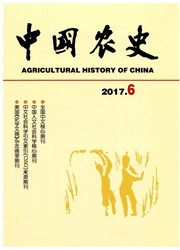

 中文摘要:
中文摘要:
随着中国全新世大暖期的到来,黄河中下游地区迎来了温暖湿润的气候环境,这为农业生产提供了前所未有的优越条件。虽然黄河中下游地区是以旱作农业为主体的,但在粟作农业发展的同时,稻作农业也在孕育发生。从距今七八千年的裴李岗文化时期直到夏商时代,尽管其问气候状况发生过冷暖波动,稻作的发展也存在有起伏变化,但在整个全新世大暖期.稻作农业基本上都在逶迤发展着。实际上在全新世大暖期存在着一个粟稻混作区,其范围随着气候变化虽在不断波动.但大体位置在黄淮之间。这与黄河中下游地区所处的南北生态过渡带的地理环境密不可分,也是南北文化交流的重要体现。从裴李岗文化时期到夏商时代的早期稻作农业,也经历了一个发生、发展的演变过程,它对黄河流域的古代农业及社会发展产生了深远的影响,也充分显示了气候变化对农业和社会发展的重要影响及作用。
 英文摘要:
英文摘要:
With the arrival of the Holocene warm period, the warm and humid climatic appeared in the middle and lower reaches of the Yellow River, which provided an unprecedented advantage for agricultural production. Although the dry Yellow River, with the millet fanning was the main agricultural form in the middle and lower reaches of the agricultural development, the rice farming was also breeding place. From Peili- gang culture period seven or eight thousand years ago to the Xia and Shang Dynasty, although, the meantime climatic conditions took place fluctuation, the development of the rice cultivation was undulate, hut basically, the rice farming kept developing windingly. Actually, there was a area with the dry farming and the rice culti- vation in the Holocene Megathermal,which scope fluctuated with the climatic change and spread between the Huang-Huai. That was inseparable to the geographic environments of the Yellow River region which located in the north-south ecological transition area, and was also an important manifestation of the cultural exchanges between the North and the South. The early rice agriculture from the Peiligang culture period to the Xia and the Shang Dynasty experienced a process from generation to development, which had a profound impact on the de- velopment of the ancient agriculture and the social development in the Yellow Rivers, also illustrated the effect and function that the climatic change had on the agricultural and the social development.
 同期刊论文项目
同期刊论文项目
 同项目期刊论文
同项目期刊论文
 期刊信息
期刊信息
